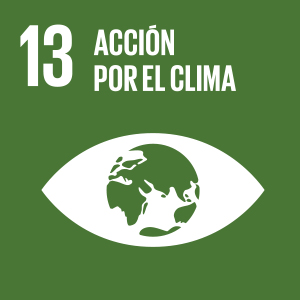

We continue to work hand-in-hand with our tenants through a green clause included in each lease agreement, so that we can collect and disclose environmental data not only on our own operations, but on our tenants as well. The clause asks tenants to voluntarily support us in compiling energy, emissions, water and waste data so that we can measure the sustainability progress of our portfolio.


We collect information from them as follows:

Scope 3 energy consumption and emissions data are calculated based on electrical bills and estimated data, which are reported in the emissions inventory.

Water data are calculated based on Vesta information, supported by payment receipts.

Waste data are provided directly by our tenants, so Vesta is not responsible for the accuracy and quality of this information.

For Vesta's common areas and offices—which it does operate and control—the environmental information reported applies to 100% of these areas.
At the close of the year, 15,838,396 sq ft, which is 39% of our GLA, had some kind of green certification, consistent with the KPI on the sustainability-linked bond that we placed on the public market in 2021, and with our Route 2030 goal.
Furthermore, to identify opportunities for improving our energy efficiency, our resource consumption and our reuse and recycling of materials, this year we conducted 27 Green PCAs in our properties, covering 2,924,753.88 sq ft of our GLA.
Based on Level 1 and Level 2 Diagnostics that we conducted of our operations last year, we are working to regularize our parks in legal matters, create various procedures and protocols to standardize their operations, introduce waste management plans ranging from training suppliers to registering our parks with the authorities as waste generators, put in place civil protection plans and train employees. With these efforts we hope to come closer to certifying our parks under ISO 14001 standard.
Our Sustainable Construction Manual
establishes the basic characteristics
characteristics and strategies we have defined,
and which we expect contractors
to follow in sustainability transformation
of Vesta’s assets.
At Vesta, we use electrical energy in common areas, offices in parks and the corporate offices. In addition, we consume fossil fuels, such as diesel, which is used for fire extinguishing systems, and, to a lesser extent, gasoline, which is used in mobile sources.



Vesta is aware that Mexico is currently in a state of water crisis, so we make sure that our wastewater discharges conform to maximum permissible limits of pollutants, as defined in the applicable regulations and legislation, which establish these limits for wastewater and treated water discharges. We also encourage our tenants to minimize their primary impacts associated with water usage.
Extraction and consumption of water for offices, common areas and tenants
|
Source |
Megaliters |
|---|---|
|
Surface water |
0 |
|
Ground water* |
60.41 |
|
Municipal supply* |
16.57 |
|
Outside water (treated)* |
20.22 |
|
Tenant consumption** |
261.95 |
|
Total |
359.15 |
*100% of the water we consume at Vesta comes from water stressed areas.
Note: Consumption data calculated based on logs shared by Vesta’s administrative areas and tenants.
**Water withdrawals by 67% of our tenants are metered separately.
We calculate our greenhouse gas (GHG) emissions based on
the specifications of the GHG Protocol, under an operational
control approach. These emissions come primarily from the burning
of fossil fuels used in stationary and mobile sources, as well as
the use of electricity in common areas and offices.

GHG emissions
Scope 1
Consumption of fuel for offices and common areas
144.36 tCO2e
Scope 2
Consumption of electricity for offices and common areas
1,206.60 tCO2e
Total:
340,900.43 tCO2e
Note: For scope 3 emissions we included: gasoline vouchers totaling 48,477.46 liters of fuel, equivalent to 941,432.2 kilometers traveled; 577 domestic flights, equivalent to 656,742.01 kilometers; 97 international flights, equivalent to 333,134.99 kilometers; and 177 bus trips.
Scope 3
Products and services purchased
66,937.21 tCO2e
Fuel and energy not included in scopes 1 and 2
345.02 tCO2e
Capital goods
49.85 tCO2e
Waste generated in operations
284.49 tCO2e
Business travel
121.59 tCO2e
Employee commuting
243.99 tCO2e
Leased assets (downstream)
271,567.31 tCO2e
The waste we generate is mostly non-hazardous and is disposed of in landfills. To a lesser extent, we also generate hazardous waste, which is treated under contract with authorized outside firms. As for our tenants, most of the waste they generate is hazardous, given the nature of their operations. However, they also produce a significant amount of non-hazardous waste.
Waste generated in parks offices and common areas by type 2022-2024
|
Type |
Metric tons |
|---|---|
|
Hazardous |
1.03 |
|
Non-hazardous |
547.3 |
|
Total |
548.3 |
Waste generated in tenant operations by type
|
Type |
Metric tons |
|---|---|
|
Hazardous |
1,968.00 |
|
Non-hazardous |
15,743.00 |
|
Total |
17,711.00 |
Note: This information represents 7% of our GLA for hazardous waste and 12% of our GLA for non-hazardous waste

In 2023, we embarked upon our first assessment of biodiversity in areas surrounding Vesta facilities using the LEAP methodology recommended by the Taskforce on Nature-related Financial Disclosure (TNFD). This process helped us to understand the possible impacts, risks and opportunities linked to a decline in biodiversity and the effect our activities as a company have on ecosystems.
In early 2025, we updated our Biodiversity
Policy to align it with the IFC performance standard
on biodiversity conservation and sustainable
management of living natural resources.
This Policy establishes our public
commitment to combat deforestation.